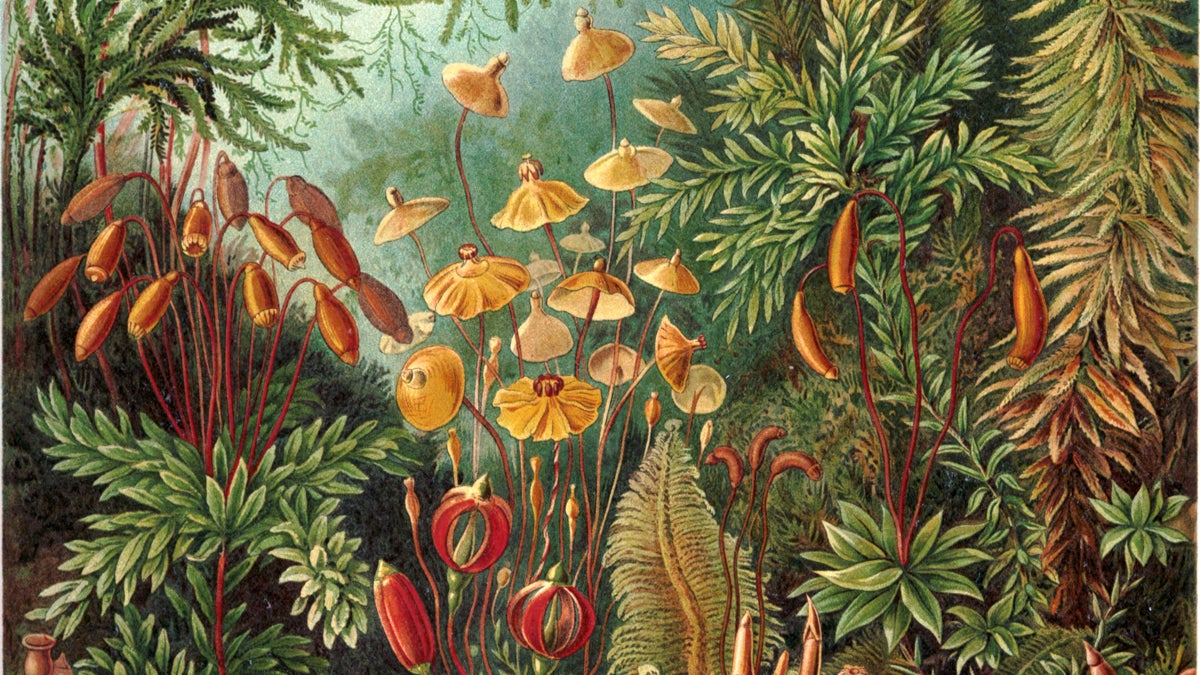The secret sex life of plants and Victorians

Muscinae Scientific illustration by Ernst Haeckel. (Wagner Free Institute of Science)
We often think of the Victorian era as stodgy and prudish. However, many historians find an alternate view in the literature, journals and art of the time and even see sexuality blooming in 19th century science.
Elaine Ayers, a doctoral candidate in the history of science program at Princeton University, says sexual curiosity in the Victorian era shows up in the study of botany. Collectors both professional and amateur sought out unusual plant specimens, such as the giant corpse flower. “They were interested in plants that seem to defy every reproductive boundary that we’re already familiar with,” she notes.
On Thursday, Ayers will discuss how this and other rare plants were pursued, in a talk called “Strange Beauty: Botanical Collecting in the Victorian Tropics.” It takes place — where else? — at Philadelphia’s own Victorian museum, The Wagner Free Institute of Science.
WHYY is your source for fact-based, in-depth journalism and information. As a nonprofit organization, we rely on financial support from readers like you. Please give today.

